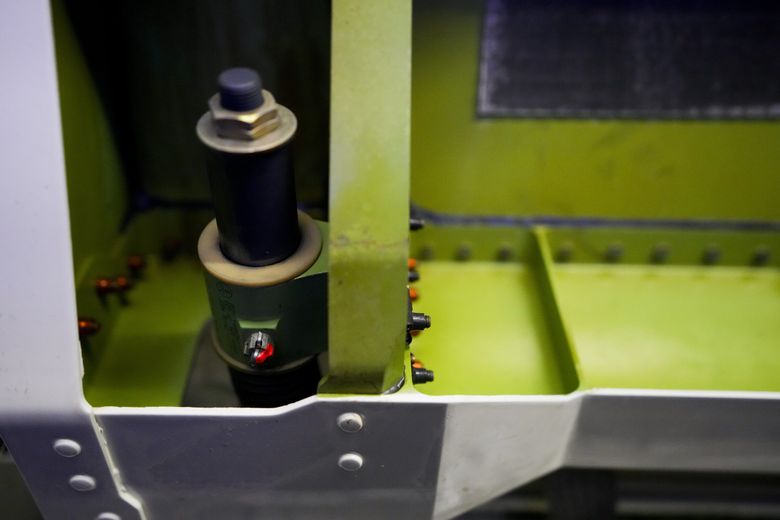
The Federal Aviation Administration has begun reviewing data from 40 preliminary inspections of Boeing 737 MAX 9 aircraft, potentially a small step toward returning the aircraft to service.
The agency grounded the planes after a piece of fuselage blew out of Alaska Airlines Flight 1282 after it took off from Portland. The piece that blew out – creating a gaping hole and rapidly depressurizing the cabin – was a door plug that some airlines use to fill a spot where an emergency exit can be installed.
After the incident, the FAA grounded the Boeing 737 MAX 9 planes that fill the space with a door plug. Those 171 planes have remained parked at airports while Alaska and United Airlines, the two U.S.-based carriers that operate MAX 9s, wait for inspection instructions from Boeing and the FAA.
Only the planes that fill the hole with a door plug will need to be inspected.
The FAA said Friday it would not approve Boeing’s proposed inspection instructions until it had reviewed data from the first 40 inspections. On Wednesday morning, the FAA said the first round of inspections had been completed.
The FAA’s announcement is not a sweeping sign that the Boeing 737 MAX 9 is headed back to the skies. Rather, it is an incremental step in what is expected to be a lengthy process.
“All 737-9 MAX aircraft with door plugs will remain grounded pending the FAA’s review and final approval of an inspection and maintenance process that satisfies all FAA safety requirements,” the agency said in a statement Wednesday.
“Once the FAA approves an inspection and maintenance process, it will be required on every grounded 737-9 MAX prior to future operation,” the statement continued. “The safety of the flying public, not speed, will determine the timeline for returning these aircraft to service.”
Alaska said it began inspecting its fleet of 65 MAX 9 aircraft on Saturday. The MAX 9 makes up about 20% of the airline’s fleet, and the grounding has led to 110 to 150 flight cancellations every day.
United said the grounding has impacted about 200 flights per day.
Now that the first inspections have been completed, the FAA and Boeing will compile the findings and determine the “next steps in order to return the 737-9 MAX fleet safely back to service,” Alaska CEO Ben Minicucci said in a video statement sent to customers Wednesday.
Minicucci said there isn’t yet an estimate for how long that process will take.
At Alaska’s Seattle hanger, he walked through an inspection with the maintenance and engineering team and “witnessed firsthand the rigor they bring to their work,” Minicucci said.
The National Transportation Safety Board is leading the investigation into the fuselage blowout on Alaska Flight 1282. The FAA has opened a separate investigation into Boeing’s quality control systems and the manufacturer’s role in what led the door plug to come loose.
Boeing has said it will comply with both investigations. It declined to comment on the FAA’s announcement Wednesday about the first round of preliminary inspections.
Spirit AeroSystems – Boeing’s supplier that builds the fuselage for the MAX 9 – said Wednesday it supports “Boeing’s efforts with the FAA and the affected airlines as they inspect the 737-9 fleet and work to safely return those airplanes to service.”
Alaska said last week it planned to increase its own oversight of Boeing’s production line in order to ensure its planes were safe to operate. The airline “engaged in a candid conversation” with Boeing CEO Dave Calhoun and the company’s leadership team to discuss quality improvement plans and began a “thorough review” of Boeing’s quality and control systems. That review will include Boeing’s production vendor oversight.
Alaska also said it would hire more professionals to validate the work and quality on the 737 MAX 9 production line.
https://ift.tt/S0TcMVo
Business
Bagikan Berita Ini














The opinions expressed in reader comments are those of the author only and do not reflect the opinions of The Seattle Times.